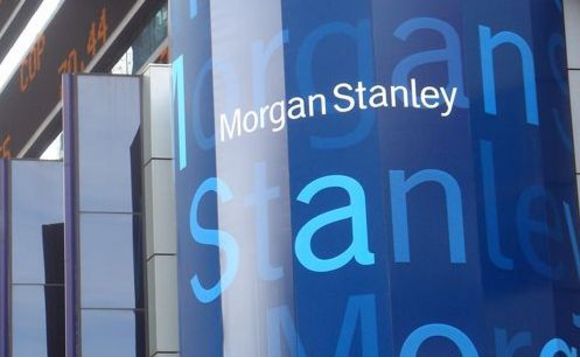
Risk solutions house of the year: HSBC
Risk Awards 2019: UK bank helped get Italian NPLs moving; revamped sales effort unlocked host of diverse deals

If the darkest hour really is before the dawn, then that moment for Italy’s banks would have been the end of 2016. Banca Monte dei Paschi di Siena had just failed in an ambitious bid to raise capital and sell a €24 billion book of non-performing loans (NPLs); its rivals were weighed down by their own NPL piles, and a plan to kickstart a bad loan securitisation market via a government guarantee scheme had so far come to naught.
For the industry – and, by extension, the state – things looked pretty black.
In the months that followed, though, a series of mammoth transactions saw the country’s biggest lenders shed roughly €53 billion ($60 billion) of their bad debts. HSBC was involved in all of them: as co-arranger, joint lead manager and cap counterparty when MPS eventually succeeded in selling €24 billion in NPLs; as joint lead manager and sole swap counterparty when UniCredit closed a portion of its €17.7 billion sale of bad loans; and as senior lender when Intesa Sanpaolo securitised €10.8 billion in NPLs. The UK bank was also involved in several lower-profile deals in which the sellers were regional Italian banks.
What changed? Well, it was partly a tightening of Italian laws to speed up the recovery process for investors, and partly the machinery put in place by the Italian government to power an NPL market – the guarantee scheme and the industry-backed fund, Atlante. Put simply, though, what changed is that deals were done. And once those deals were done, it became easier to do more.
An investor in one of the early benchmark deals says HSBC played a key role in getting the market moving, by providing finance on terms that made transactions work for all sides involved.
“Not only did they commit to what they promised, but they were by far the most aggressive. They were willing to lend larger amounts, at a longer maturity, and on more flexible terms. We ended up having a bank that would have been seen as an outsider setting the new standard – so, yes, they have made a genuine contribution to the market,” says a distressed debt specialist at that investor.
Two other local participants in the market – an NPL seller and a mortgage servicer – make similar claims.
So, was HSBC overlooking something that other providers of finance were seeing?
“No, I don’t think so – the other banks were too conservative,” says the investor.
Kevin Godfrey, global head of structured finance with HSBC in London, attributes the difference to the bank’s willingness to immerse itself in the local market.
We have been very focused on helping the public sector deleverage, and using that as a tool to distribute more to the private sector as well
Elie El Hayek, HSBC
“Our senior risk guys went to Italy. They met lawyers, servicers, investors and talked to them about how the market worked and what they were doing. It was about getting a real feel for what was happening on the ground – they weren’t just sitting in London or New York, reading newspapers, which helped enormously when we came forward with a trade,” he says.
This ultimately enabled a more granular approach to pricing, which gave the bank its edge, Godfrey argues. Because the deals were so large, the way to approach pricing was to split them into their constituent parts, he says: “Take leasing assets as an example. They have completely different rules in terms of how they are held and recovered in Italy – a regulated entity has to hold the leasing asset, meaning you can’t aggregate it with a pool of normal real-estate assets. So if the transaction has those two pieces to it, and you’re going to lend against them in the aggregate, then the question is how does your loan work? And are you looking for cross-collateralisation between your real-estate pool and your leasing pool?”
In HSBC’s case, the answer was to think about the loan in terms of the individual pools, and the cash recoveries expected against each of them and then to vary the performance metrics on the pools throughout their life – as a result, the bank was comfortable allowing a portion of the cashflows from those pools to go to the equity investor in the deal, rather than insisting the senior investors were first repaid in full. This quality – technically known as leakage – is highly prized by equity investors.
Distribution fixes
In parallel with its attempts to understand the mechanics of the local market, HSBC also had to work out how to distribute the risk. The answers depended on what form the assets took, says Godfrey – in some cases, HSBC was making unrated, senior loans in a private transaction; others were senior and rated; and the UniCredit deal was rated in order to obtain the GACS guarantee, meaning investors in the senior tranche of a securitisation would ultimately be repaid by the Italian state if the bonds failed to perform – but only after reaching maturity, which might take decades.
In each case, the assets were different to many of those generated in other European NPL markets such as Ireland and Spain, where rated securitisations have proved to be relatively liquid and tradable. So, the bank’s sales team engaged in a major outreach and education effort, speaking to a total of around 150 potential investors around the globe. The peculiarities of the Italian market produced a much smaller pool of willing buyers, but Godfrey says the effort paid off.
“Over the last couple of years, we’ve sold off paper from all those categories of assets and my belief is we now know better than any person in the market where that paper places, where it prices, and what to do with it. And we’ve fed that information back to the Banca d’Italia and the ministry of finance so they can consider what they may need to do if they want to bring more investors to the market,” he says.
The bank’s work on NPLs is one manifestation of a new approach to risk solutions that has produced a wild diversity of deals over the past year – from emerging markets financing that relies on the smart use of derivatives, to big credit portfolio trades in the UK.
One common theme – as the Italian NPLs story illustrates – is the bank’s ability to act as a bridge between the public sector and the capital markets.
“We have been very focused on helping the public sector deleverage, and using that as a tool to distribute more to the private sector as well,” says Elie El Hayek, the bank’s global head of fixed income. “We mapped the problems, the issues, the assets that need to be distributed and sold – and we also mapped the buyers. And then we started to work on solutions to be able to package those assets and sell them back.”
In 2017, HSBC executed a $2 billion structured repo trade for the Central Bank of Egypt; this year, it followed up with two similar transactions for the same client – in the first, it was lead arranger on the roll of last year’s trade; in the second, the duration of the trade was extended to three years.
The bank also underwrote $1 billion of funding for Argentina, collateralised by bonds issued for the purpose.
In both cases, the bank retained some risk and distributed a portion – with the clients’ consent – but is coy when it comes to describing the mechanism.
In the case of Egypt, “what we can say is that we have risk management techniques in place, and because of the ones we use, we can see a market emerging around this”, says Guido Hebert, global head of fixed income structuring with the bank. In Argentina, “the techniques we used were new to us and we faced different challenges because of the complexity of the underlying trade”, he says.
The need to distribute risks from structured financing requires different parts of the bank to work together, says El Hayek. It also required the creation of a global solutions sales team. In all, around 80 sales staff across the bank now work on the solutions business, which the bank defines as “anything structured – particularly if it is financing-led, particularly if it is around the more bespoke elements of what we do – anything where there is more of a bilateral conversation with the client goes into this part of the business”, Simon Hotchin, global co-head of client solutions for the bank.

These efforts are distinct from the bank’s macro sales teams, which are split by asset class and focus on flow market-making.
Sometimes, of course, the solutions business needs to draw on the expertise of the macro team – as was the case earlier this year, when a large UK life insurance firm wanted to sell around £200 million of investment-grade UK corporate bonds in order to move seamlessly into an illiquid, higher-yielding asset.
The insurer’s main worry was market impact, so it insisted on a number of safeguards – no pre-hedging by the dealer, for example – and it wanted the ability to execute at an agreed spread to the market, at a time of its choosing.
To make that work, HSBC created a Chinese wall within its credit trading team – only one trader was told about the pending transaction, and was involved in pricing it. The bank’s monitoring and surveillance staff helped police the separation.
“We were provided with an exceptional level of price and execution certainty over an extended period of time to fit our execution needs. We did a series of dry run trades, and at any time we knew we could trade. So, HSBC took significant credit and interest rate risk – it was a high-stakes, strategic trade. But it went extremely well. They gave us a lot of transparency, which is what we need,” says the insurer’s head of investment risk.
Other trades required the bank to negotiate a series of very different hurdles: in one, an Asian client was seeking a €400 million loan from HSBC’s Hong Kong entity, which is funded primarily in Hong Kong dollars and US dollars. The bank was able to provide euros by executing a cross-currency swap, but because the client needed to be able to cancel the loan at any point during its 364-day life, HSBC had to find a way to manage the risk of being left with a naked swap. It did so by agreeing the client would face a compensation payment if it chose to exit the loan, says Hebert.
In other transactions, HSBC used a Turkish bank’s mortgage pool as security for a $250 million-equivalent Turkish lira loan, with a maturity of five years – generating a benefit from an underutilised asset, while also avoiding the cross-currency swap market, which can be a costly way for local banks to access international liquidity. And HSBC also enabled a Chilean issuer to raise money cheaply in Hong Kong dollars – an apparently simple trade that required the bank to source Chilean inflation as a hedge.
“One of the things we’re most proud of is the diversity of the business,” says Hebert. “There’s a common denominator – which is the need to really understand the situation – but the situations are incredibly varied.”
Only users who have a paid subscription or are part of a corporate subscription are able to print or copy content.
To access these options, along with all other subscription benefits, please contact info@risk.net or view our subscription options here: http://subscriptions.risk.net/subscribe
You are currently unable to print this content. Please contact info@risk.net to find out more.
You are currently unable to copy this content. Please contact info@risk.net to find out more.
Copyright Infopro Digital Limited. All rights reserved.
As outlined in our terms and conditions, https://www.infopro-digital.com/terms-and-conditions/subscriptions/ (point 2.4), printing is limited to a single copy.
If you would like to purchase additional rights please email info@risk.net
Copyright Infopro Digital Limited. All rights reserved.
You may share this content using our article tools. As outlined in our terms and conditions, https://www.infopro-digital.com/terms-and-conditions/subscriptions/ (clause 2.4), an Authorised User may only make one copy of the materials for their own personal use. You must also comply with the restrictions in clause 2.5.
If you would like to purchase additional rights please email info@risk.net
More on Awards
Clearing house of the year: LCH
Risk Awards 2025: LCH outshines rivals in its commitment to innovation and co-operation with clearing members
Best use of machine learning/AI: CompatibL
CompatibL won Best use of machine learning/AI at the 2025 Risk Markets Technology Awards for its use of LLMs for automated trade entry, redefining speed and reliability in what-if analytics
Markets Technology Awards 2025 winners’ review
Vendors jockeying for position in this year’s MTAs, as banks and regulators take aim at counterparty blind spots
Equity derivatives house of the year: Bank of America
Risk Awards 2025: Bank gains plaudits – and profits – with enhanced product range, including new variants of short-vol structures and equity dispersion
Law firm of the year: Linklaters
Risk Awards 2025: Law firm’s work helped buttress markets for credit derivatives, clearing and digital assets
Derivatives house of the year: UBS
Risk Awards 2025: Mega-merger expected to add $1 billion to markets revenues, via 30 integration projects
Interest rate derivatives house of the year: JP Morgan
Risk Awards 2025: Steepener hedges and Spire novations helped clients navigate shifting rates regime
Currency derivatives house of the year: UBS
Risk Awards 2025: Access to wealth management client base helped Swiss bank to recycle volatility and provide accurate pricing for a range of FX structures
Most read
- What drove the Taiwan dollar surge?
- Hedge funds burned as Hong Kong dollar bets implode
- US has got what it wanted from Basel, say former regulators






















